✨You Can Touch the Times Square New Year's Eve Ball!
Find out how you can take home a piece of the old New Year's Eve ball!


New York City is endowed with many iconic parks, perhaps none more famous worldwide than Central Park. But its existence was not foreordained by the early planners of New York City, who had intended that whole swath of land to be a continuation of the street grid. But there are many parks older than Central Park, some of which are even older than the Declaration of Independence.
Each of these parks have seen their fair share of history, not all of it peaceful, though all are beloved by residents and visitors. Here are New York City’s 10 oldest parks:
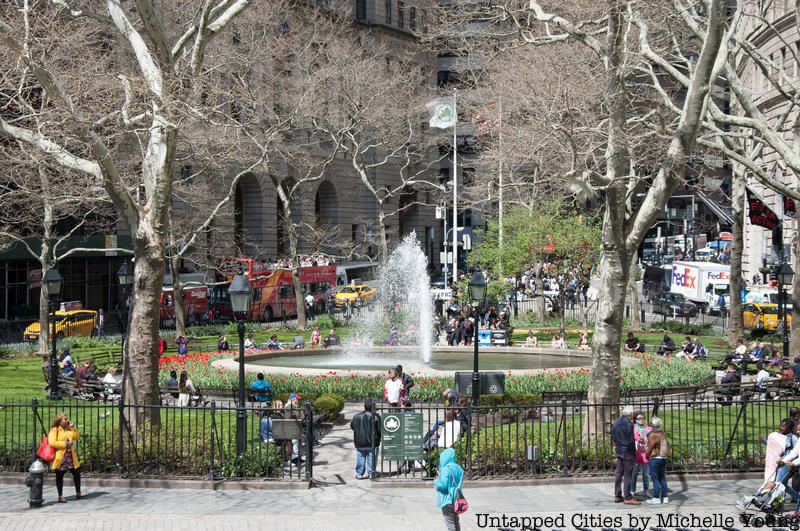
Bowling Green Park is New York City’s oldest park, created in 1733, and deeply rooted in the city’s history. Over the past 200 plus years, the park has served many purposes including a cattle market, parade ground and an actual bowling green by the Dutch (and later the English) for lawn bowling in the 18th century. The park is surrounded by its original 18th-century fence, which also happens to be the oldest in the city and is a New York City landmark. This iconic park is listed on the U.S. National Register of Historic Places, and the famous Charging Bull is located on the northern end of the park.
In 1770, a statue of King George III was dedicated in Bowling Green. However, this statue was later destroyed in 1776 along with several other British symbols in New York in a riot after a public reading of the Declaration of Independence on July 9. Today, pieces of the original statue can be found at the New-York Historical Society and in other locations around the world. Learn more about this park and surrounding area on this weekend’s tour of the Remnants of Dutch New Amsterdam.
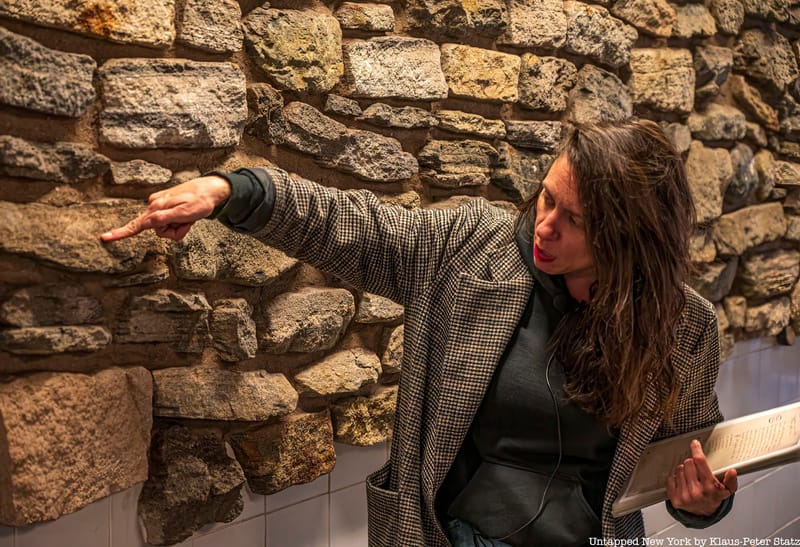
Saturday, May 24th at 2pm ET: Learn more about NYC's Dutch history as you trace the original street grid and physically touch remnants like an 18th-century wall and the Bowling Green Fence!
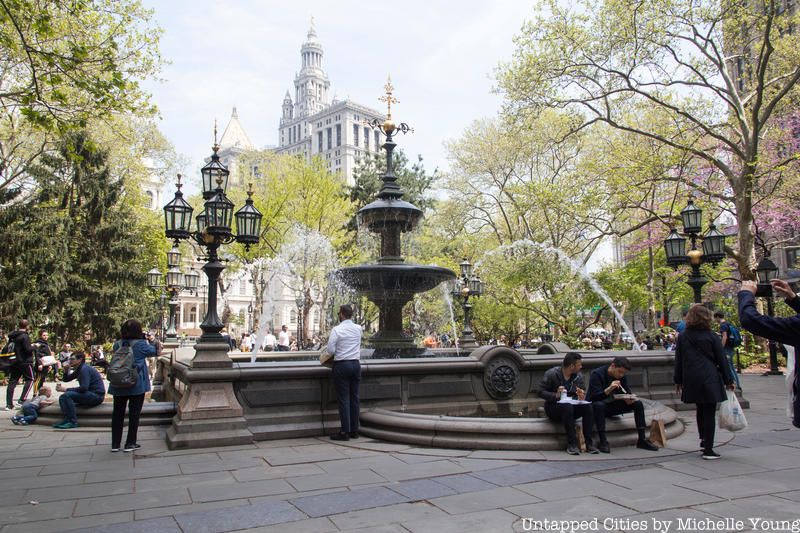
Created in 1736, City Hall Park is surrounded by lavish centuries-old government buildings including City Hall, the Tweed Courthouse, the Manhattan Municipal Building, and the Surrogates Courthouse. In the bustling downtown area, this park provides a much needed green spot, popular by those working in the area. The park also features a bike path which leads directly to the Brooklyn Bridge.
This historic park was the site of several Revolutionary War events. In 1765, New Yorkers protested the Stamp Act of 1765 at City Hall Park. In 1766, the Sons of Liberty erected the first “Liberty Pole” in City Hall Park, a commemorative mast later chopped down by the British. A 1921 replica now stands near the pole’s original location between City Hall and Broadway. On July 9, 1776, people gathered in the commons to hear George Washington read the Declaration of Independence.
The city’s first art museum, the Rotunda, was built in City Park in 1818, as New York City’s cultural scene was growing. Today, a bronze plaque in the park marks the site of the Rotunda. When slavery was abolished in 1827, a two-day long celebration and parade took place inside this park. City Hall Park often features public art installations, including several large scale works currently on display by Carmen Herrera, an initiative of the Public Art Fund.
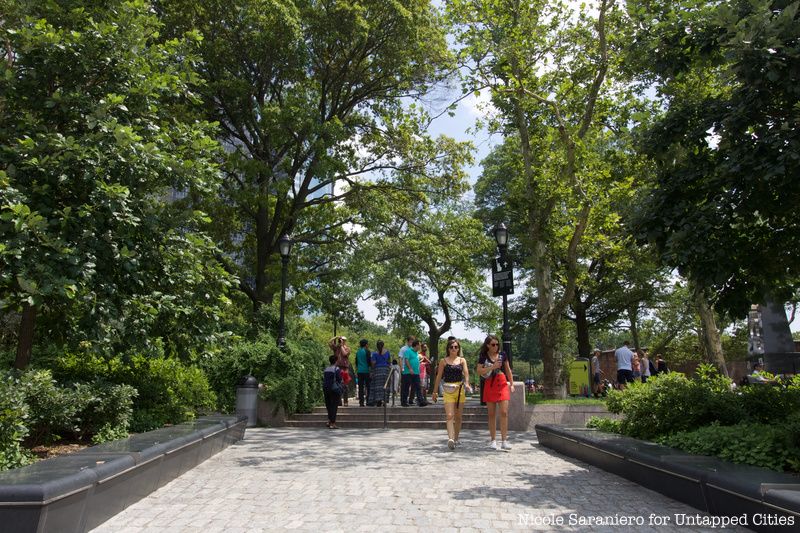
The Battery (formerly known as Battery Park), located at the southern tip of Manhattan Island facing New York Harbor, is named for the artillery batteries built in the late 17th century to protect the settlement behind them. Prior to settlement, the area was originally occupied by the Lenape Native Americans and later populated by Dutch settlers, before the British took over the settlement in 1664 and renamed the site Fort James and later Fort George. American troops commandeered the fort during the Revolutionary War. At the end of the war in 1783, the site was the center of celebrations on Evacuation Day, when the last British troops fled the United States.
Its life as a public space begins around 1790, following the end of the American Revolution. According to the website of The Battery, “The Battery is transformed into a public promenade for walking and leisure,” following the demolition of Fort George and it expands several times over the years. The decommissioning of Castle Clinton, a fort built just before the War of 1812, and the repurposing of the structure as a public attraction solidifies its destination status. In 1855, the water between Castle Clinton and The Battery is filled in and in 1870 efforts are made to restore “the tree-shaded area as Lower Manhattan’s favorite park,” according to The New York Chronology by James Traeger.
Today, the park is home to several monuments and attractions, in addition to Castle Clinton. Visitors can also see various military memorials including the East Coast Memorial, dedicated to those missing in World War II, and American Merchant Mariners’ Memorial, the Korean War Memorial, and several others.
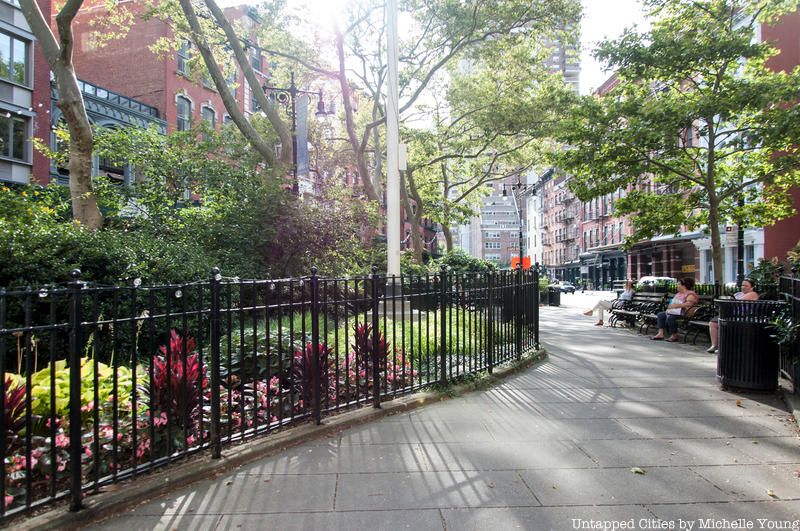
Duane Park, a 0.12 acre park located at Hudson and Duane streets in Tribeca, was the first public space acquired by the City specifically for use as a public park in 1797. The triangle of land was sold by Trinity Church to the city for five dollars, on the condition that it be fenced and landscaped as a place of recreation. The park and the adjacent street are both named after James Duane, the first mayor of New York after the Revolutionary War and prominent parishioner at Trinity Church.
The park is surrounded by beautiful, architecturally intricate 19th-century loft buildings, including one with a stunning skybridge on Staple Street. The park has been re-designed several times over the years. In 1990, after being severely neglected, the organization Friends of Duane Park founded to protect and contribute to the maintenance and restoration of Duane Park and other public spaces in the neighborhood.
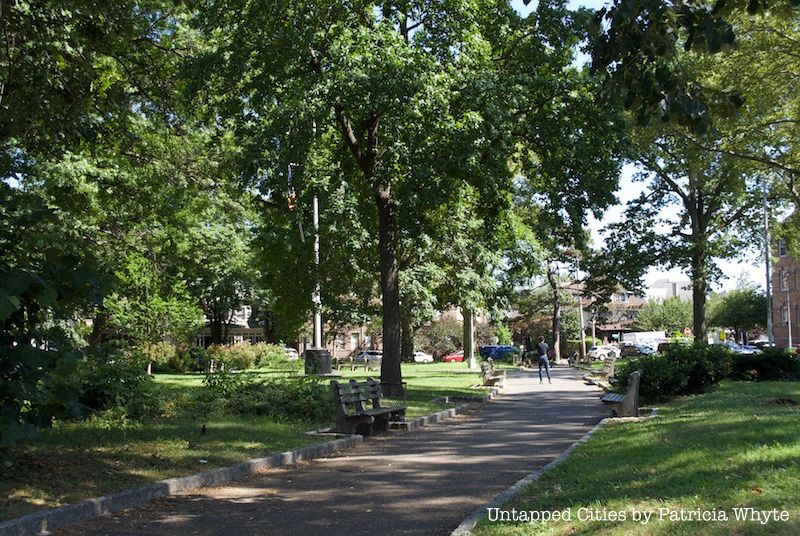
Veteran’s Park is Staten Island’s oldest park, laid out in 1836. Originally Port Richmond Park, the site was renamed after World War II in 1949, as a tribute to local veterans. The park was at one time enclosed by a cast-iron fence but is now an open green space, providing a recreational site for community residents and features one of the original Andrew Carnegie libraries on its edge.
Port Richmond, which had also been known as Ryer’s Landing, Mersereau’s Landing, and Decker’s Landing, was a well-populated mid-19th-century port town. Lumber and coal yards surrounded the waterfront, and freight and passenger boats stopped in Port Richmond on the way to New York City. Commodore Cornelius Vanderbilt was born just blocks from this park. The ferry service was discontinued when the Bayonne Bridge, which is still visible from Veteran’s Park, opened in 1931.
At the corner of the park sits a large decorative drinking fountain with an engraved dedication to Eugene G. Putnam, known as Putnam Memorial. The park also features a large flagpole in the center. A stone monument with a plaque commemorates Sullivan’s Attack of August 22, 1777, when Revolutionary War officer John Sullivan led an unsuccessful night attack on Staten Island.
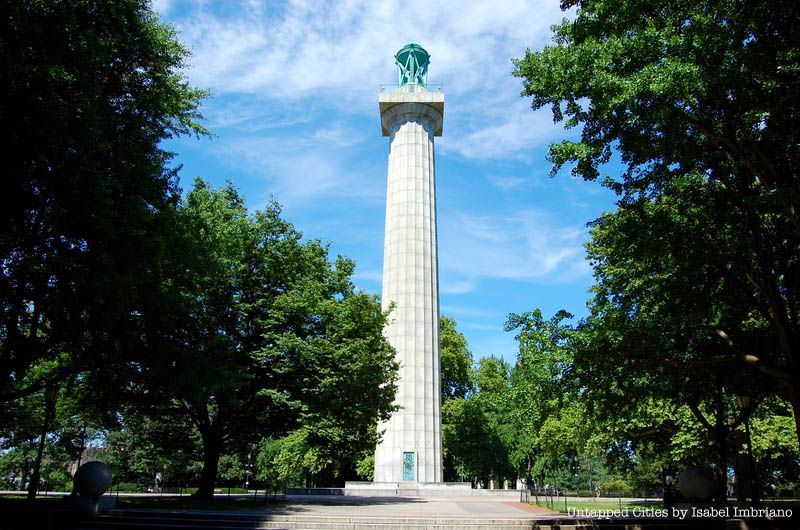
Located in Fort Greene, Brooklyn, this park was named originally after the fort which was located there, Fort Putnam. It was later renamed Fort Greene during the War of 1812 after Revolutionary War hero Nathaniel Greene. The land was acquired by the city for public use in 1839. The park includes part of the high ground where the Continental Army built fortifications during the early days of the Revolutionary War. The park also features Prison Ship Martyrs’ Monument, a monument honoring the 11,500 American prisoners who were kept on British ships and died from disease and malnutrition during the war. (Get a glimpse inside the normally-closed monument here)
Today, Fort Greene Park is host to several community events, including an annual Summer Literary Festival and a summer concert series. The Greene Glass Project, started in 2010, hosts annual cleanups in the summer as well.
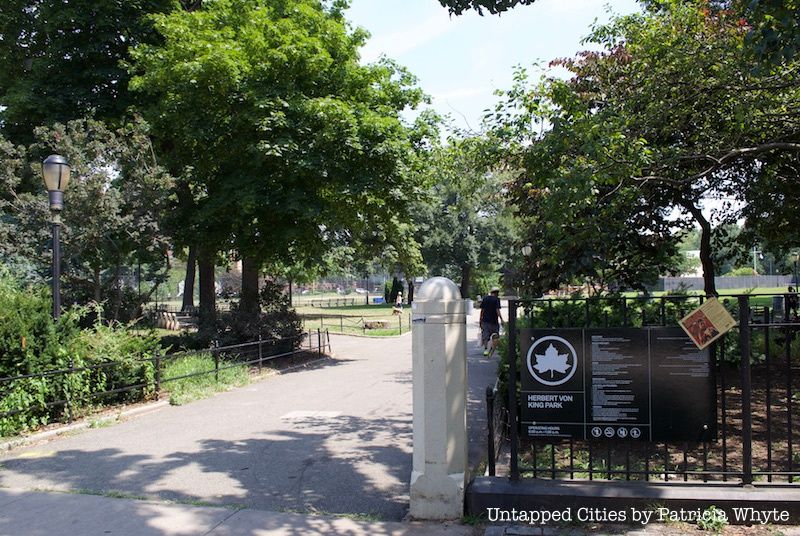
Von King Park in Bedford-Stuyvesant, Brooklyn, was laid out in 1839 after the Village of Brooklyn was incorporated as a city, making it one of the first parks in the history of Brooklyn. Originally called Tompkins Park, this site was constructed in 1870 and designed by Frederick Law Olmsted Sr. and Calvert Vaux, who also designed Central Park. The design was conceived as a residential space similar to Washington Square and Tompkins Square in Manhattan.
Little of the park’s original design is still present today. The center of the park was opened up in 1915 to accommodate crowds drawn there. A library was built the same year and a playground was built in 1927. Remnants of the original park include the 19th-century brownstones surrounding the park, and a rare southern magnolia tree planted around 1885 in front of a nearby brownstone. The tree was designated a city landmark in 1970, making it one of the city’s only living landmarks.
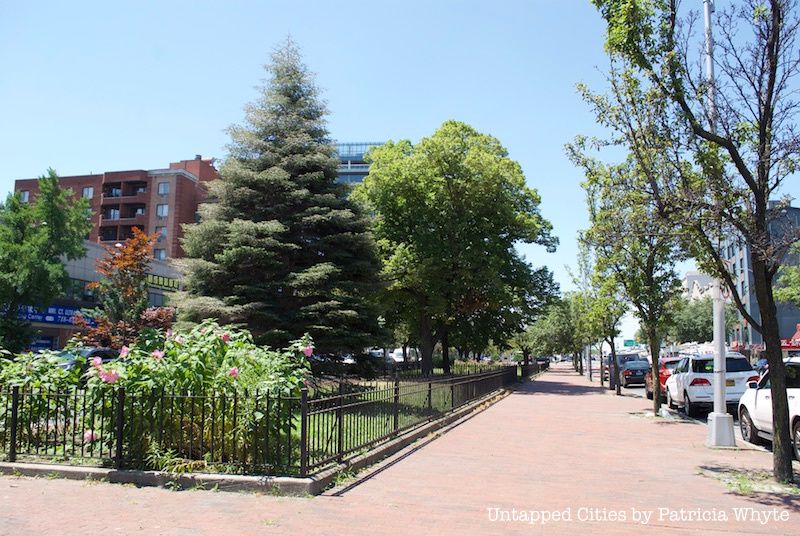
Daniel Carter Beard Square, located in Flushing, Queens, is a tribute its namesake. Daniel Carter Beard was a distinguished resident of Flushing. A civil engineer, illustrator, and naturalist, Beard was the founder of the Boy Scouts of America in 1910 to teach boys about scouting and nature. The square was dedicated in 1943, two years after his death. The Boy Scouts affectionately referred to Beard as “Uncle Dan”. Today, Boy Scout Troop #461 and students from the Daniel Carter Beard Junior High School work to maintain and clean the park.
Known as Flushing Park until 1942, an 1841 map of the town of Flushing shows the site as a public park for the first time, making it the oldest public park in Queens. Four monuments stand in the park, including a Spanish-American War Memorial Flagpole (1950), a Civil War memorial obelisk (1865), an ASPCA horse trough (1909), and a World War I memorial by Hermon A. MacNeil (1925).
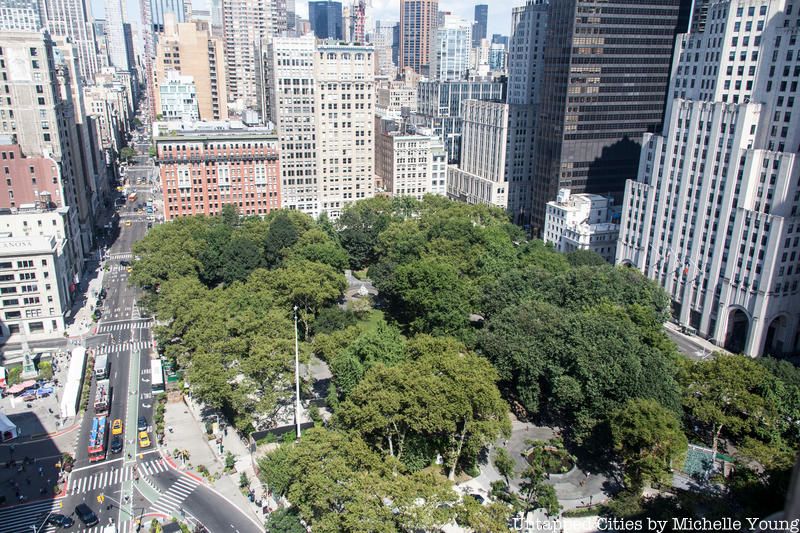
Located at the intersection of Fifth Avenue and Broadway at 23rd Street in Manhattan, Madison Square Park remains one of New York City’s most iconic and oldest parks. Laid out in 1847, this six-acre park was named after President James Madison, and continues to be a focus of public activities for the city.
The area where the park is now had been a swampy hunting ground which first came into use as a public space in 1686. There was a United States Army arsenal there from 1811 until 1825, when it became the New York House of Refuge for the Society for the Protection of Juvenile Delinquents for children under sixteen committed by the courts for indefinite periods until 1839 when the building was destroyed in a fire. On May 10, 1847, Madison Square Park opened to the public.
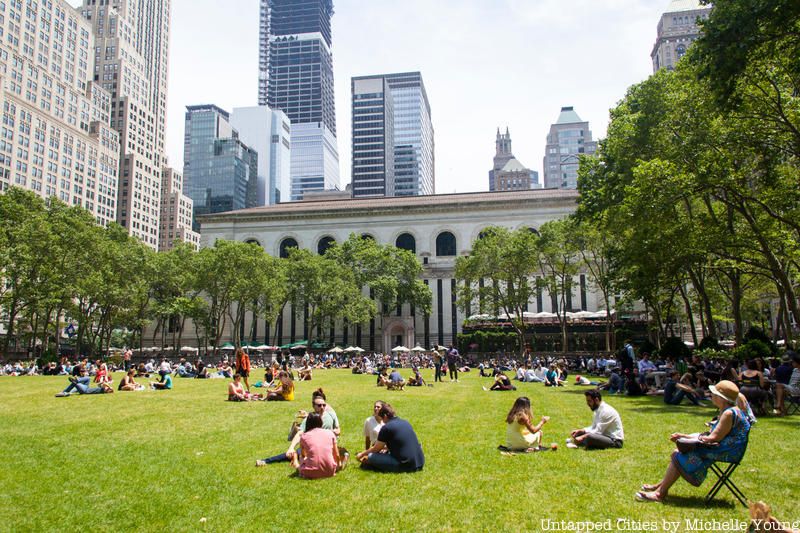
Bryant Park was opened the same year as Madison Square Park in 1847 as Reservoir Square but the area was first designated a public space in 1686 by New York’s colonial governor, Thomas Dongan when the area was still a wilderness. Beginning in 1823, the site was designated a graveyard for the poor until 1840, when thousands of bodies were moved to Wards Island. The square was also used for military drills during the American Civil War.
In 1884, the park was renamed after William Cullen Bryant, the editor of the New York Evening Post, who crusaded through the 1840s for the creation of Central Park. Located between Fifth and Sixth Avenues and between 40th and 42nd Streets in Midtown Manhattan, Bryant Park is managed by the private organization Bryant Park Corporation. Bryant Park is located entirely over an underground structure that houses the New York Public Library‘s stacks, which were built in the 1980s.
By the 1970s, Bryant Park had a high crime rate as it was highly populated by drug dealers, prostitutes and the homeless. The Bryant Park Restoration Corporation was founded in 1980 to improve the conditions and rebuild the park. The park was reopened in 1992 to critical acclaim. Today, numerous community programs are hosted by Bryant Park and it is recognized as one of the signature examples of New York City’s revival in the 1990s.
Next, discover several of these downtown parks on our next tour of the Remnants of Dutch New Amsterdam and our Underground Tour of the NYC Subway.
Subscribe to our newsletter